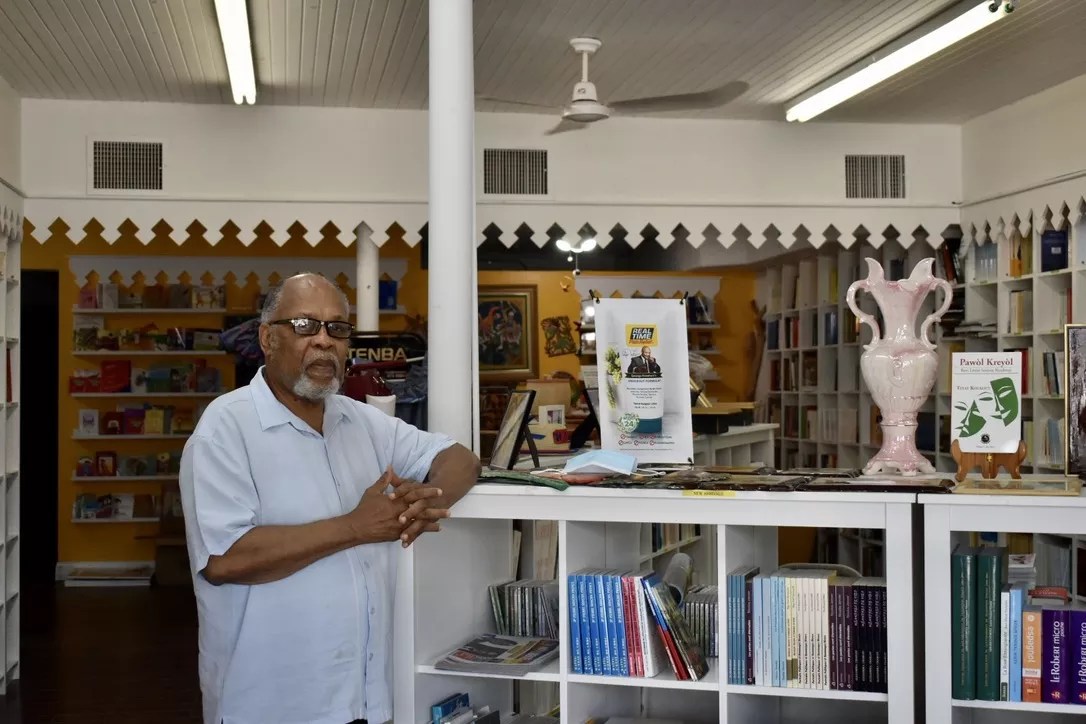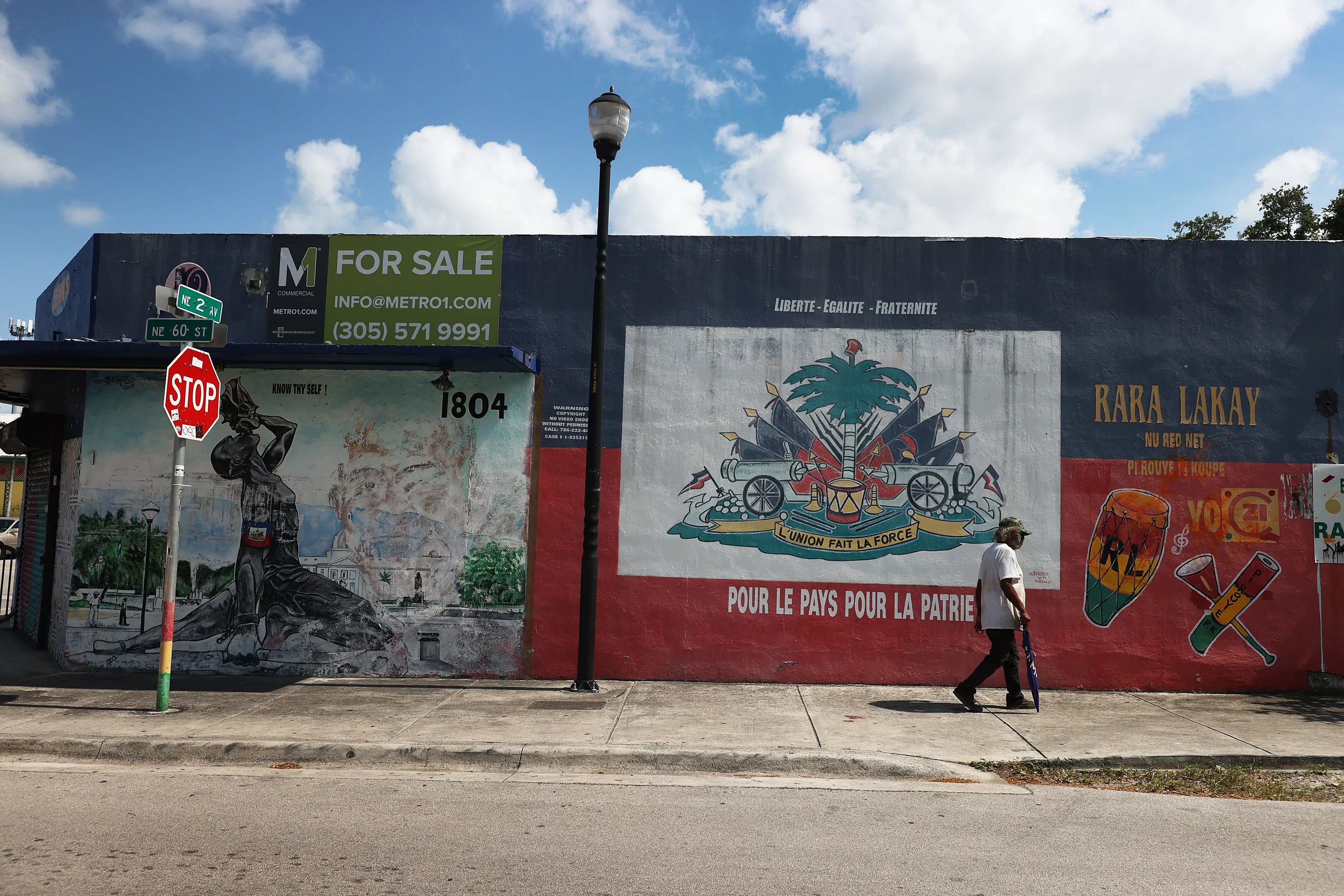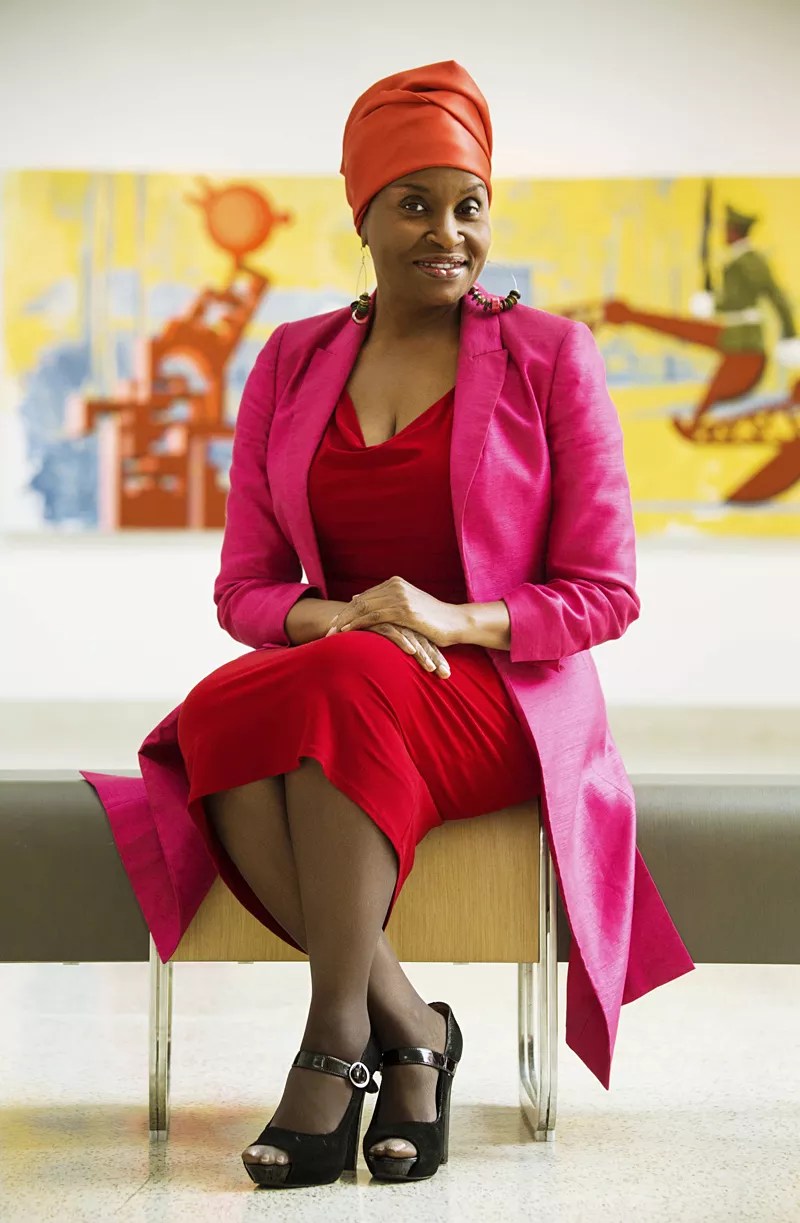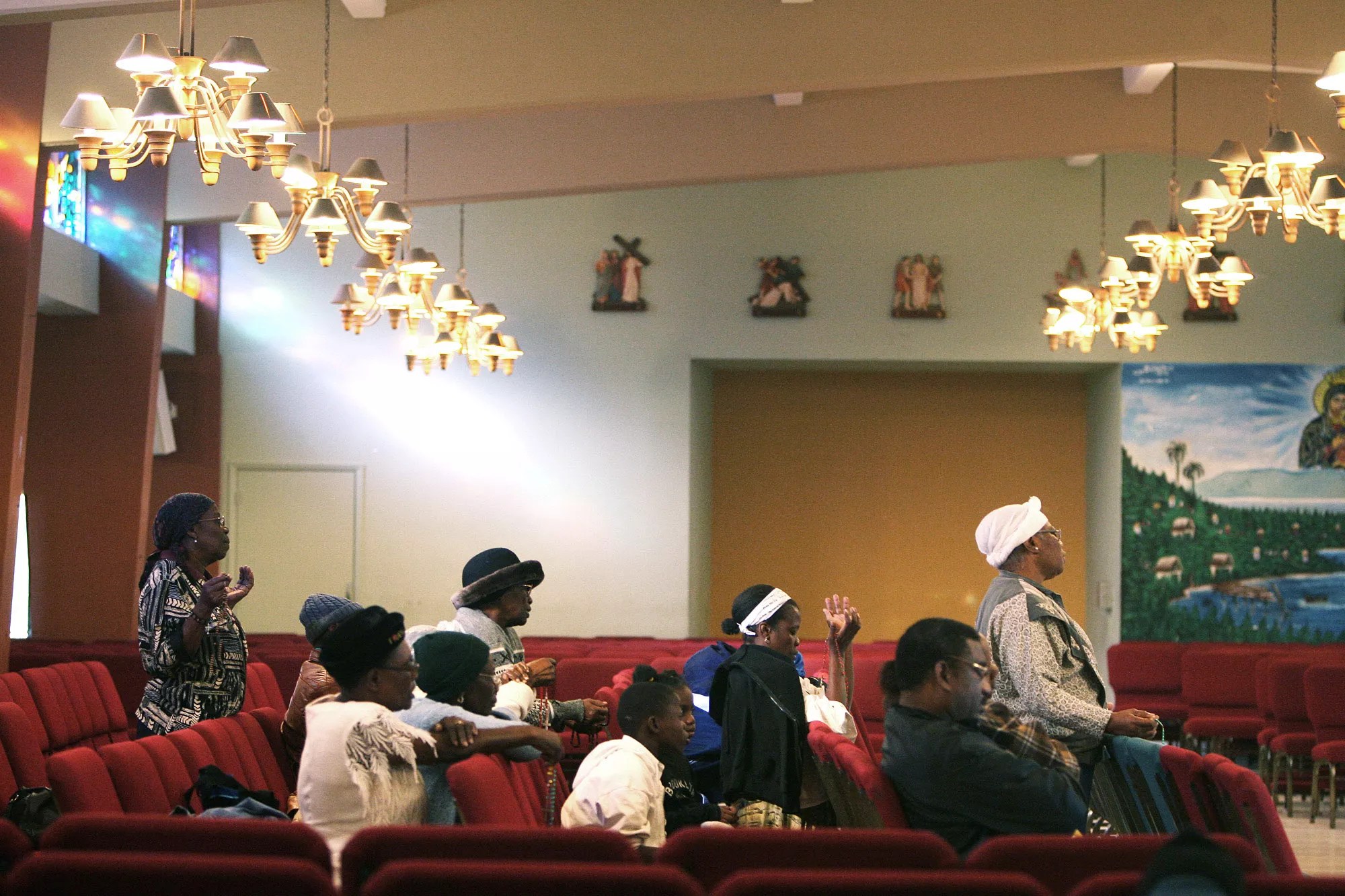
Photo by Alex DeLuca

Audio By Carbonatix
Roughly 650 miles away from the 7.2 earthquake that rocked southwestern Haiti on August 14, Jan Mapou sits in a mustard-colored armchair in the back of his bookstore, Libreri Mapou, in Miami’s Little Haiti neighborhood.
He is surrounded by novels and children’s books in French, Creole, and English. But these days, he has little interest in fiction. Instead, the 79-year-old is struggling to make sense of the devastation to his motherland. Near the shop’s entrance there’s a pile of Le Floridien newspapers bearing the headline, “Florida’s Haitian Community Mobilizes to Help Mother Land in Aftermath of Massive Quake.”
It has only been six days since Mapou was awakened at his South Florida home by a call from a friend with bad news.
“He said, ‘Your town where you are born, Les Cayes, and the whole south section is gone,” the Haitian activist and bookshop owner tells New Times. “And I said, ‘Oh my God.'”
Mapou panicked. His sister lives in the coastal town of Les Cayes. His daughters were vacationing in the neighboring Dominican Republic.
News reports estimate that the earthquake has killed more than 2,000 people, a number that is expected to rise as rescuers continue picking through the rubble. Meanwhile, Miami’s Haitian community is reeling with grief. The images of the quake-ravaged country are like déjÁ vu, surfacing painful memories of the 2010 earthquake, which struck the capital of Port-au-Prince, killing an estimated 300,000 people and leaving more than a million others homeless. The most recent earthquake was even stronger.
Over the years, the nation of 11 million has faced one blow after another. A presidential assassination. Escalating gang violence. A pandemic. And now, the latest catastrophe has left Haitians pulling the living and the dead from flattened churches, homes, and businesses – sometimes with their bare hands. Then, two days after being rocked by the quake, Tropical Storm Grace battered the island with heavy rain and winds, further hampering rescue efforts.
“You feel embarrassed to see so many things happening to a small country,” Mapou says.
After hearing about the quake, Mapou immediately switched on CNN. He worried that it had reached his twin daughters in the Dominican Republic. He remembers hearing scientists predict that the next earthquake would travel to the east of the country, which would put his children at risk. Mapou is relieved this wasn’t the case.
Mapou has been in daily communication via WhatsApp messenger with his sister in Les Cayes. Since the earthquake, Mapou says, his sister has slept outside, terrified that the aftershocks could cause the structure to collapse on her.
Even though many Haitian-Americans left the island owing to instability and political unrest, for many, their instinct is to travel there to support their family members in need. But it’s not that simple.
Mapou left Haiti in 1971 under the brutal Duvalier regime, after he was jailed by the government for about four months for advocating the use of Creole rather than French, considered the “language of Haiti’s colonizers.” He moved to New York, where he lived for 12 years before settling in Miami in 1984. In 1990, he opened Libreri Mapou, which has since served as a cultural hub for the Haitian community in Miami.
It’s been more than ten years since Mapou visited his homeland. He doesn’t expect to return anytime soon.
“In Haiti, when you get into trouble once, you don’t get into trouble a second time,” he says. “Because you won’t get a second chance.”

A mural on NE Second Avenue in Little Haiti.
The aroma of fried fish and meat wafts from restaurants across NE Second Avenue. English and Creole languages mingle in the street. The Haitian dance music compas plays from a speaker outside a beauty-supply shop.
In the corner of a busy strip mall, Mareie Clark stands beside a minivan overflowing with old clothes and accessories that spill out of the vehicle and onto the concrete below: A single brown leather sandal sits near the top of the pile. A blue Under Armour shirt hangs neatly on the trunk door.
The 65-year-old is selling the garments to raise money for her family in Haiti.
For many in the diaspora, the latest disaster has emphasized the distance between them and their homeland, conjuring feelings of frustration and helplessness. Many have desperately scrambled for ways to help their loved ones in the Caribbean, who report needing medical supplies and over-the-counter medications. It’s often easier and faster to wire money.
So far, Clark says, she collected about $60 for her brother, mother, cousins, and niece. She’s been in near-daily contact with her brother, who lives near Port-au-Prince. Although the quake didn’t hit the capital city, Clark’s brother, like Jan Mapou’s sister, has been sleeping outside his home with his wife and their two young children, aged 4 and 5. The extra money would help them secure food and shelter.
The last time Clark traveled to Haiti was nine years ago, and she desperately wants to visit her family. She smiles as she looks through old photos of her 87-year-old mother, who is in a wheelchair, being spoon-fed food by one of the grandchildren. Still, Clark has no plans to return.
“I’m scared to go,” she says. “I don’t go to Haiti for trouble.”

Marleine Bastien, executive director of Family Action Network Movement
Photo by Stian Roenning
On Saturday, August 14, Marleine Bastien turned her phone back on after an hourlong Zumba class and found herself flooded with missed calls from people in Haiti. Her heart sank. Not again, she thought.
In 2010, she was one of the first responders on the ground in Haiti after the earthquake. Despite scientists’ warnings that another quake was possible on the island, she didn’t expect it to happen so soon.
“I thought that we had more time,” Bastien tells New Times.
Now Bastien is the executive director of Family Action Network Movement (FANM), which in recent days has begun collecting items, such as medicine, tents, gloves, rubbing alcohol, and soap to send to Haiti. (She’s also campaigning for a seat on the Miami-Dade County Commission’s District 2, which encompasses parts of Little Haiti, Liberty City, Hialeah, North Miami Beach, and North Miami.)
FANM plans to gradually report on how much money it raises and implement a report card-type system for other groups collecting money for Haiti. By doing this, the organization hopes to monitor how other groups use the funds and to hold them accountable – particularly in light of the fact that the Red Cross was accused of misusing money it raised for Haitians after the earthquake in 2010.
“We want Haiti to live, we want it to thrive,” she says. “And that demands doing things differently, because we cannot continue to do things the same way and expect different results.”
Bastien said she’s saddened to hear about the Haitian people using their bare hands to rescue people from the rubble. But she has tried to find solace in the unwavering resilience of a citizenry that, in the face of seemingly impossible challenges, has maintained its faith.
“There’s a very high level of hopelessness in this community,” Bastien says of South Florida’s Haitian diaspora. “But in Haiti, it’s a different situation, because people do not have the luxury. They have to act.”

A 2010 prayer service for earthquake victims at Notre Dame d’Haiti Catholic Church in Little Haiti
“Why Haiti? Why are we going through so much?” Father Reginald Jean-Mary asked God upon hearing news of the massive quake. “Are you listening to our prayers? Why?”
A pastor at Notre Dame d’Haiti Catholic Church in Little Haiti, Jean-Mary tells New Times that his cousin, a priest in Les Anglais, on Haiti’s southern coast, was performing a baptism on August 14 when his church came crashing down. His cousin survived, but at least 17 parishioners were killed in the collapse, including a 3-year-old child.
In the coming days and weeks, Jean-Mary hopes to see Miami’s Haitian community continue to band together in solidarity with the people in Haiti. Notre Dame d’Haiti will hold a memorial service on Friday, August 27, to honor the victims of the earthquake. It’s all too familiar for the church – which has been called the “living room” of the Haitian diaspora, particularly in devastating moments like this one.
More than a decade after springing into action after the 2010 quake – collecting and sending aid to Haiti – he’s once again mobilizing for his devastated homeland. His church launched relief efforts as soon as it could, currently collecting money, medical supplies, and items such as flashlights, batteries, and generators to send to people on the ground in Haiti.
He says his church is in contact with bishops and priests in Haiti, who are helping to ensure that everything they collect goes directly to those in need. They’re currently working with Food for the Poor, an international relief organization, to transport aid to the country.
“In 2010, we were very effective in channeling everything that we had, and we served our people with dignity,” Jean-Mary says. “And that’s what we hope to accomplish again.”
It is painful to watch what is happening to his home country. Many churches and schools across Haiti were destroyed during the quake. Jean-Mary explains that as groups attempt to transport aid to those in need, gang-infested highways have hampered their efforts.
He says he doesn’t want people to give up on Haiti.
“We continue to go deep into the darkness, but we do not lose hope,” Jean-Mary says. “Because we believe we shall see the light one day.”